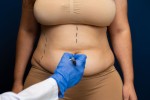Introduction
Deciding on the right time for an arm lift involves more than choosing a free week on your calendar. Many factors determine when your body and lifestyle align best with the procedure. These include physical readiness, emotional preparedness and even the time of year. In this article, we’ll explore what makes a moment ideal for scheduling an arm lift. Whether you're planning ahead or ready now, this guide will help you decide.
Why Timing Matters for an Arm Lift
Timing is important because it affects recovery and the quality of your results. If you schedule surgery too early, your weight might still fluctuate. This could impact the final contour of your arms. On the other hand, waiting too long might delay results you’re ready to enjoy. Furthermore, good timing supports smoother healing. When your life is stable, stress is lower, and focus can stay on recovery. Moreover, the right timing ensures you get long-term satisfaction from your results.
Ideal Age Range for an Arm Lift
Although age isn’t the only factor, most arm lift patients are aged between 30-65. This is when skin elasticity begins to decline, and excess skin becomes noticeable. Have you recently lost a significant amount of weight? An arm lift can help remove the loose skin left behind. Additionally, patients in this age group are often more emotionally prepared. They’ve usually completed childbearing and major lifestyle shifts, making this a stable phase for surgery. However, readiness varies by individual, not age alone.
Weight Stability Before an Arm Lift
One of the most important signs you’re ready for an arm lift is stable weight. If you’re still losing or gaining, results may not last. Ideally, your weight should have remained stable for at least six months. This shows your body is not undergoing major changes, which could affect the final shape. Moreover, a steady weight supports smoother healing and more predictable results. If you're planning weight loss, it's best to complete that journey before surgery. This maximises both appearance and durability of the outcome.
Seasonal Considerations for Arm Lift Surgery
The time of year can impact your recovery experience. Many patients prefer cooler months like autumn or winter for several reasons. Firstly, healing garments are more comfortable to wear in cooler weather. Secondly, you’re less likely to sweat, which can improve comfort. Thirdly, staying indoors is easier when it’s cold outside, supporting rest. Additionally, long sleeves can hide swelling or bandages more easily. Planning surgery during a quiet season—after holidays or events—can also make recovery less stressful.

Your Personal Schedule and Commitments
Choosing the best time means aligning surgery with your personal calendar. Consider work responsibilities, family events and travel plans. You’ll need time to rest and avoid lifting or stretching. Most people take 1–2 weeks off work, though some need longer. If your job is physically demanding, plan for extended leave. Furthermore, make sure you have help at home during the early recovery phase. Planning ahead means less disruption and a better healing environment.
Emotional Readiness for Cosmetic Surgery
Besides physical readiness, your emotional state is just as important. Undergoing an arm lift is a big decision. Patients should feel confident, informed and realistic about outcomes. If you're making the choice to please others, it may not be the right time. Instead, ensure your motivation is personal. Additionally, mental calm helps with recovery. When your emotional health is strong, you’re more likely to follow post-op instructions. You’re also more likely to stay positive through the healing phase.
Preparing for Arm Lift Surgery: What to Do in Advance
Good preparation leads to a better recovery.
Here’s what to focus on before your arm lift:
- Arrange time off work
- Prepare your home with essentials at arm’s reach
- Stop smoking and limit alcohol
- Avoid blood-thinning medications if advised
- Eat a balanced diet to support healing
Furthermore, speak with your surgeon about expectations and follow pre-op guidelines. The more prepared you are, the smoother things go.
Combining an Arm Lift with Other Procedures
Many patients combine an arm lift with other treatments to achieve a more balanced look. This includes tummy tucks, breast lifts or body contouring. Combining surgeries reduces total downtime and may be more cost-effective. However, it also means a longer recovery. If you’re considering more than one procedure, timing becomes even more important. You’ll need additional help at home and more time off your feet. Discuss this option during your consultation to decide if it suits your lifestyle and goals.
Signs You’re Ready for an Arm Lift
Still unsure if it’s the right time? Here are some signs you're ready:
- You’ve maintained a stable weight for several months
- You’ve finished major weight loss or pregnancies
- Loose skin on your arms bothers you daily
- You can take time off work and daily responsibilities
- You're emotionally prepared and informed
When several of these apply, it’s likely a good moment to move forward with your plan.
Conclusion
There’s no single answer to when the best time for an arm lift is. However, physical readiness, stable weight, the right season and personal availability all play a role. Choosing the right time ensures better results and a smoother recovery. By planning wisely, your journey will be more comfortable, effective and rewarding.
For more information and to book a consultation visit the ACIBADEM Beauty Center Arm Lift page.
Frequently Asked Questions
Yes, but cooler seasons may offer a more comfortable healing process due to compression garments.
It’s best to wait at least six months at a stable weight before scheduling your arm lift.
Yes, especially for the first few days, as lifting and stretching will be limited.
There’s no perfect age, but most patients are between 30 and 65 with stable health and goals.
Most patients can return to light desk work in 7–10 days, but recovery varies by person.













